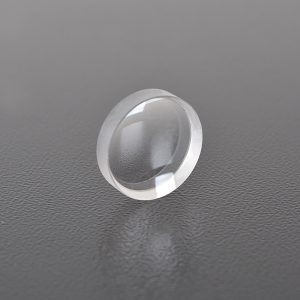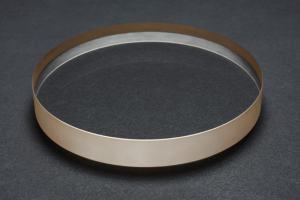
Medical Lens Factory: the Perfect Combination of Precision Manufacturing and Medical Technology
In modern medical technology, lenses, as the core components of optical equipment, play a vital role. Whether it is endoscopes, microscopes, laser surgical equipment, or ophthalmic diagnostic instruments, the quality and precision of lenses directly affect the performance of medical equipment and the accuracy of diagnosis. Therefore, as the production base of these precision optical components, medical lens factories have become an indispensable link in the medical technology industry chain. This article will explore in depth the production process, technical requirements and importance of medical lens factories in the medical field.
1. The core tasks of medical lens factories
The main task of medical lens factories is to design, manufacture and test high-precision lenses for medical equipment. These lenses need to meet extremely high optical performance requirements, including high transmittance, low scattering, precise radius of curvature and surface finish. Since medical equipment is usually used inside the human body or for delicate diagnostic operations, the quality of the lens is directly related to the health and safety of patients, so the production process of medical lens factories must strictly follow international standards and industry specifications.
2. Production process of medical lenses
1. Design and R&D
The production of medical lenses starts with design. According to the specific needs of medical equipment, optical engineers will use professional optical design software (such as Zemax, Code V, etc.) to design the lens. The design process needs to consider factors such as the focal length, field of view, and aberration correction of the lens to ensure that the lens can meet the optical performance requirements of the medical device.
2. Material selection The material selection of the lens is crucial.
Medical lenses usually use high-purity optical glass or special optical plastics. These materials need to have high transmittance, low dispersion, high temperature resistance, and chemical corrosion resistance. In addition, some special medical equipment (such as laser surgical equipment) may also need to use materials that are resistant to laser damage.
3. Precision machining
The lens processing process includes cutting, grinding, polishing, and coating. These steps need to be performed on high-precision CNC machine tools and polishing equipment to ensure that the surface finish and curvature radius of the lens meet the design requirements. In particular, the polishing process requires the surface roughness to reach the nanometer level to avoid light scattering and imaging distortion.
4. Coating treatment
In order to improve the transmittance of the lens and reduce reflection loss, medical lenses usually need to be coated. The coating material can be a single-layer or multi-layer anti-reflective film, depending on the application scenario of the lens. The coating process needs to be carried out in a vacuum environment to ensure the uniformity and adhesion of the film layer.
5. Quality inspection
The quality inspection of medical lenses is the most critical link in the production process. Inspection items include surface finish, radius of curvature, focal length, transmittance, aberration, etc. Inspection equipment usually includes interferometers, spectrometers, microscopes, etc. Only lenses that pass strict inspection can enter the next process or be delivered to customers.
3. Technical requirements of medical lens factories
1. High-precision processing technology
The processing accuracy requirements of medical lenses are extremely high, usually reaching the micron or even nanometer level. Therefore, medical lens factories need to be equipped with advanced CNC machine tools, polishing equipment and testing instruments to ensure that the geometry and optical performance of the lens meet the design requirements.
2. Clean production environment
Due to the extremely high cleanliness requirements of the application scenarios of medical lenses, a dust-free environment must be maintained during the production process. Medical lens factories usually need to establish clean workshops and strictly control the concentration of particulate matter in the air to avoid contamination of the lens surface.
3. Strict quality management system
The production of medical lenses must follow strict quality management systems, such as ISO 13485 (Quality Management System for Medical Devices) and ISO 9001 (Quality Management System). These standards require strict control and records at every stage, from raw material procurement, production process to final product testing.
4. Application of medical lenses in the medical field
1. Endoscope
Endoscope is one of the typical applications of medical lenses. The lens group in the endoscope is used to transmit images from the inside of the human body to an external display to help doctors perform diagnosis and surgical operations. Endoscope lenses need to have characteristics such as high resolution, large field of view, and low distortion.
2. Microscope
The lenses in medical microscopes are used to magnify tiny objects and help doctors observe microscopic structures such as cells and tissues. The imaging quality of microscope lenses directly affects the accuracy of diagnosis, so the optical performance of the lenses is extremely high.
3. Laser surgical equipment
The lenses in laser surgical equipment are used to focus laser beams for precise cutting or burning operations. These lenses need to have high resistance to laser damage and precise focal length control.
4. Ophthalmic diagnostic instruments
The lenses in ophthalmic diagnostic instruments (such as fundus cameras, corneal topographers, etc.) are used to image and analyze eye structures. These lenses need to have high transmittance and low aberration to ensure the clarity and accuracy of diagnostic images.
5. Future development trends
With the continuous advancement of medical technology, medical lens factories are also facing new challenges and opportunities. In the future, the development trends of medical lenses may include:
1. Miniaturization and integration
With the popularity of minimally invasive surgery and portable medical devices, the size of medical lenses will become smaller and smaller, and more functions will need to be integrated. This will require medical lens factories to continue to innovate in design and processing technology.
2. Intelligent manufacturing
The introduction of intelligent manufacturing technology will improve the production efficiency and consistency of medical lenses. Through automated production lines and intelligent detection systems, medical lens factories can achieve more efficient and precise production.
3. New materials and new processes
With the continuous emergence of new materials and new processes, the performance of medical lenses will be further improved. For example, nanomaterials and 3D printing technology are expected to be widely used in medical lens manufacturing.
Conclusion
As an important link in the medical technology industry chain, medical lens factories are responsible for providing high-precision optical components for medical equipment. Through precise design, strict processing and testing processes, medical lens factories have provided a solid foundation for the development of modern medical technology. In the future, with the continuous advancement of medical technology, medical lens factories will continue to play an important role in technological innovation and quality management, and promote the development of medical equipment towards higher precision and higher efficiency.
Hanzhong Brisun Optics Co., Ltd. Is the high precision optical element manufacturer provides customized production of Various optical lenses, including spherical lens, cylindrical lens, optical window, mirror, prism, filter, metal base mirror and other high-precision optical elements. The base materials include various optical glass, fused quartz, calcium fluoride (CaF2), zinc selenide (ZnSe), germanium (GE), silicon (SI), sapphire, metal and other materials. And provide antireflective film, high reflection film, spectroscopic film, metal film and other optical coatings.
Welcome to OEM and Purchasing!


